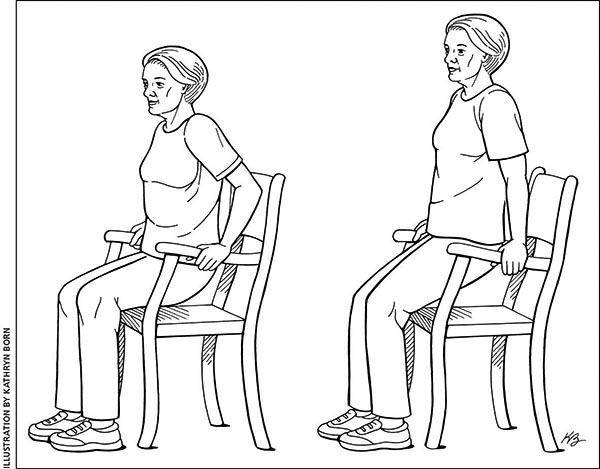
Am Fam Physician. 2017;95(7):online
See related article on exercise for seniors
Why should I exercise?
Exercise can improve your health and help keep you strong and fit. Exercise can help you stay independent as you get older.
Is it safe for me to exercise?
Most older adults can exercise safely. Talk with your doctor first if you are not sure if exercise is safe for you or if you have a medical condition that is not well controlled.
How do I get started?
Start slowly with activities that you feel comfortable doing. This can help you avoid getting hurt. Do activities that you enjoy and that fit into your daily life. Consider joining a gym or working with a certified personal fitness trainer.
Walking, for example, is an excellent activity to start with.
As you become more comfortable with exercising, slowly increase the time you exercise. Then, increase the difficulty of your activities.
Wear loose, comfortable clothing and well-fitting, sturdy shoes.
Drink water throughout the exercise session.
What kind of exercise should I do?
There are four kinds of exercise that you can do: aerobic activities, strength or resistance, balance, and stretching.
What are aerobic activities?
Aerobic activities make you breathe faster and make your heart beat harder. Examples of aerobic activities include:
Aerobics classes in a local gym, Zumba dance, swimming, water exercises
Brisk walking or biking
Activities around the house (for example, pushing a lawn mower, raking leaves, climbing stairs, vacuuming the floor, or gardening)
Fun activities you can do with friends or family (for example, dancing, golf, badminton, or doubles tennis)
To estimate how hard you are exercising, think about this: If you can sing while exercising, it's probably too easy for you. If you have a hard time speaking, then you may need to slow down. You should be able to do your exercise while still being able to talk comfortably.
You should gradually increase your exercise to 30 minutes on most or all days of the week. If you don't have 30 minutes in your daily routine to be active, you can exercise in three 10-minute periods.
What are strength or resistance exercises?
Strength or resistance exercises help you build muscle. Examples of muscle-strengthening activities include bicep curls and chair dips (see picture).

You should keep doing each movement 10 to 15 times (one set), rest, and then repeat each movement for another 10 to 15 times.
Try to slowly work your way up to two or three sets of each exercise, and do a variety of muscle-strengthening activities at least two days a week.
What are balance exercises?
Balance exercises improve your balance and reduce your chance of falling. You can start slowly, and work your way up to doing balance exercises at least three days a week. Examples of balance exercises include holding onto a sturdy chair or wall, and then standing on one foot for 10 seconds, then repeating this 10 times. Next, switch to your other leg and repeat 10 times.
What are stretching exercises?
Stretching exercises improve your flexibility so you can do your daily activities, such as reaching over your head. Stretching exercises should be done after aerobic or strength exercises. Stretch slowly to reach the desired position without causing any pain, and then hold for 10 to 30 seconds. Relax, breathe, and then repeat, trying to stretch farther.
When should I call my doctor?
If you have pain for more than one or two days after exercise, you should talk to your doctor.
Stop exercising right away and talk to your doctor if you have any of these symptoms:
Chest pain or pressure, or trouble breathing
Break out in a cold sweat
Light-headedness, dizziness, or nausea
Severe pain in joints or muscle cramps
Where can I get more information?
Your doctor
AAFP's Patient Information Resource
https://familydoctor.org/familydoctor/en/seniors/staying-healthy/exercise-and-seniors.html
Centers for Disease Control and Prevention
http://www.cdc.gov/physicalactivity/basics/older_adults/index.htm
Exercise & Physical Activity: Your Everyday Guide from the National Institute on Aging
https://www.nia.nih.gov/health/publication/exercise-physical-activity/introduction
Go4Life from the National Institute on Aging
National Library of Medicine's Medline Plus
